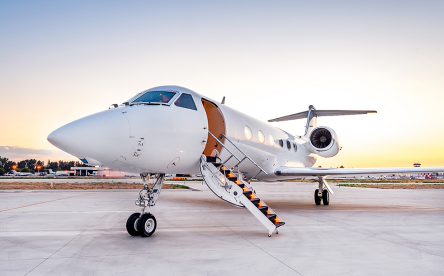Understanding the Costs of Private Jet Travel: Essential Information for Passengers
Traveling by private jet provides exceptional comfort and flexibility, yet knowing the factors that influence overall expenses is crucial before planning your next flight.
Understanding Private Jets A private jet is an aircraft dedicated to the personal use of individuals, families, or businesses. Unlike standard commercial flights, private jets let passengers set their own departure schedules, land at smaller airports closer to their destinations, and enjoy tailored services according to their preferences. Aircraft options vary from compact jets suitable for short trips to larger planes capable of long-haul international flights
Types of Private Jets
Fuel Expenses and Their Influence Fuel remains a major contributor to the overall cost of private aviation. Prices fluctuate depending on oil markets, geopolitical events, and seasonal demand. Consumption varies by aircraft type—small jets may use 130–150 gallons per hour, while larger jets can exceed 500 gallons. With average fuel prices around $6 per gallon in 2023, this factor alone can add thousands to a single journey.
Seasonal Variations in Pricing Private flight costs are strongly influenced by the time of year. Busy periods such as summer holidays and end-of-year festivities can increase prices by roughly 30%, whereas off-season months like September or early winter usually offer more favorable rates.
Impact of Aircraft Selection on Cost The jet you choose affects overall pricing in several ways:
Passenger Count: Larger groups require bigger jets, which raise costs.
Flight Distance: Longer trips need planes with extended range, which are more expensive to operate.
Amenities: In-flight features such as Wi-Fi, catering, and entertainment contribute to the total cost.
Other Fees to Account For Additional expenses beyond the base charter price may include:
Landing Fees: Costs vary by airport and jet size.
Crew Expenses: Overnight accommodations and travel for pilots and staff.
Seasonal Charges: Winter operations, such as de-icing, can increase expenses.
Options for Frequent Travelers Frequent private flyers often explore structured programs:
Jet Cards: Prepaid flight hours at a fixed hourly rate.
Fractional Ownership: Shared ownership in an aircraft, providing guaranteed annual flight hours.
These solutions offer predictable availability and pricing but generally require significant upfront investment.
Market Competition and Pricing Trends Operators adjust rates to remain competitive:
Real-Time Rate Adjustments: Prices shift based on supply, demand, and aircraft availability.
Promotions: Discounts are often available during slow travel periods.
Tips for Cost Savings
Book in advance to secure lower rates.
Consider “empty leg” flights, which offer reduced fares for repositioning flights.
Travel during off-peak times to reduce costs.
Frequently Asked Questions
Q1: Hourly cost per flight? $2,000 to $10,000 depending on jet type and route length.
Q2: Environmental concerns? Private jets produce more carbon per passenger than commercial flights, but carbon offset options are increasingly available.
Q3: Can pets fly onboard? Most operators allow pets, with carrier-specific rules.
Q4: What is an “empty leg”? A one-way flight offered at a discount when the aircraft returns empty.
Q5: Security procedures? Required, but faster and less intrusive than commercial airports.
Disclaimer: This information reflects 2023 market conditions. Costs and policies differ by region and operator. Always verify details directly with your chosen service before booking.
https://www.anabj.co.jp/en/
https://www.aerotoyota.co.jp/business_jet/
